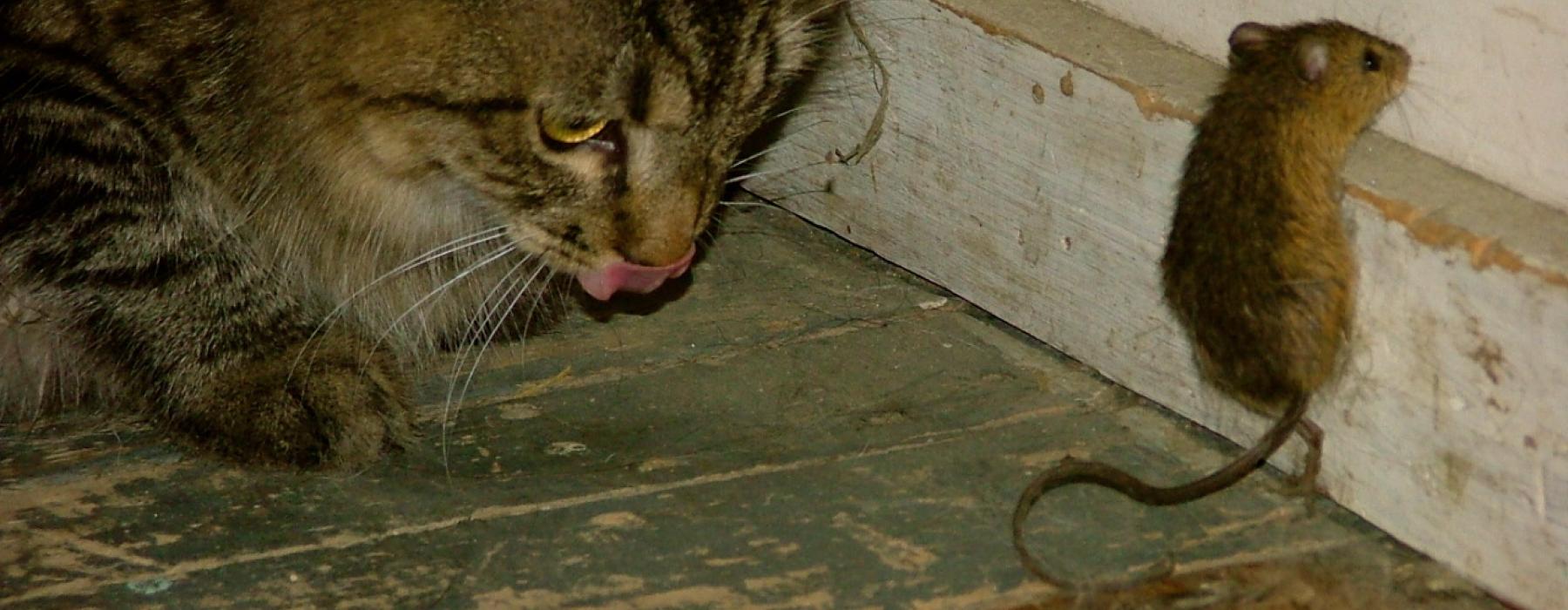Taxonomy
Order Rodentia
Family Cricetidae
Basic Description:
The house mouse is grayish brown to brown with no significant line separating the lighter belly coloration. It has large prominent ears and large black eyes. Its tail is long, scaly and nearly bald. The house mouse has a distinctive smell that some describe as similar to ammonia. Males and females do show any difference in size.
Body length (no tail): 65-95 mm.
Tail length: 60-105 mm.
Mass: 12-30 g.
Habitat
The house mouse’s natural habitat is rocky crevices and soil and leaf litter where they are able to make complex burrows. However, they are usually found in anthropogenic structures in conjunction with humans. They are found near food sources in hidden-away spaces. They make nests from fabric scraps and paper.
Vermont Range
House mice are non-native and are present in most of Vermont and North America.
Diet
Type: Omnivore
House mice will choose their diet based on what is available. In the wild, they will eat grasses, seeds, roots, stems and larvae. In houses, they will eat any food items and even household products such as glue and soap.
Reproduction
House mice start breeding in the early spring and continue to breed through the late fall. Females have 1-4 litters per year, each with a gestation period of 19-21 days. They can have around 5-11 young. The house mouse reaches sexual maturity at 5-7 weeks, and has a life expectancy of one year. Males and females release hormones which initiate breeding.
Conservation Status
- Vermont: SNA (Non-Native)
- Global: G5 (Secure)
- IUCN Red List: Least Concern
More Information
Vermont Distribution
Banner Image:
Photo 3019135, (c) Jenn Megyesi, some rights reserved (CC BY-NC) / Cropped from original







